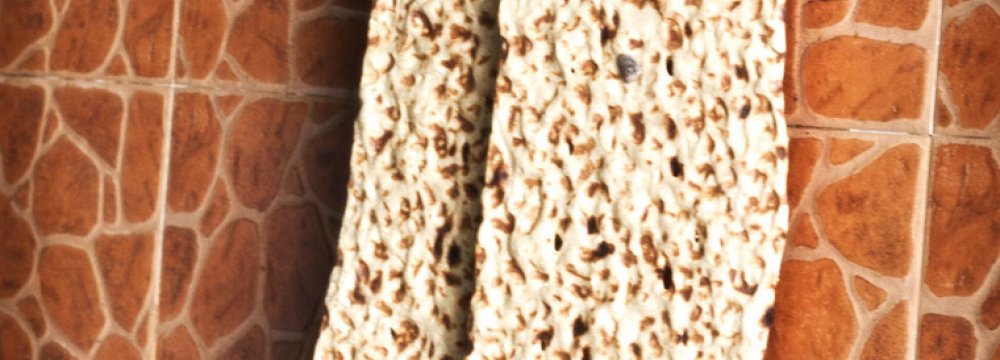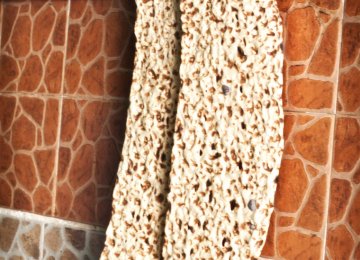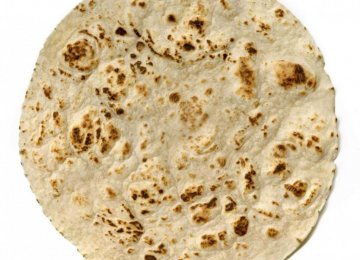Aroma of bread is the breath of life. Some say it was Zoroaster’s Neolithic revolution, but bread, this source of sustenance, is perhaps another main reason or motivation to leave hunting and gathering and adopt farming. Nothing is comparable to a simple combination of bread and cheese. And it shall be a feast when tomato and vegetables like mint, basil, or scallion are added. Needless to say, as is always the case with Persian breakfast, a black tea deepens the experience even more, according to Hamshahrionline.
Iranians are privileged to have a lavish variety of flat breads.
‘Barbari’
Barabri is a tasty, amber-colored bread resembling Italian focaccia, similar in style and texture to pizza dough. Throughout Iran, it is the most popular bread. Bakeries offer barbari simple or topped with sesame. Barbari, whether round or oblong, is generally known to be the favorite bread of Turks.
‘Taftoon’
Taftoon is fragrant and a bit sweet. This bread is made with milk, yoghurt, and eggs. It can be flavored with saffron. It is customary to top it with cardamom and butter. Poppy seeds are sometimes added for decoration. Taftoon is baked in a clay oven. Taftoon is also available in cuisines of Pakistan and Uttar Pradesh in northern India.
‘Shirmal’
Shirmal literally means “milk-kneaded”. Structurally, it is similar to taftoon; only the dough is kneaded with egg, milk, vanilla, and sugar; and it puffs out like a cushion. Shirmal, of course, is not considered as a serious, hunger-satiating bread. Nevertheless, some bakeries put it on their side shelf.
‘Lavash’
Lavash is an extremely thin and flat bread. When fresh out of oven, it is soft and delicate. It is a good bread for stacking. It is customary to allow it to dry for storage, then to sprinkle a few drops of water on it to freshen it back up before serving. In the West, California in particular, Lavash has become very popular and is the bread of choice for wraps. Lavash has also recently been at the center of some controversy over its origin and nationality, and has unjustifiably been claimed by Armenia and Azerbaijan. Iran sees it clearly as one of its national breads, and unequivocally belonging to the Persian culture.
‘Sangak’
The glorious Sangak bread has derived its name from the pebbles on which it is baked. ‘Sang’ means stone, and it refers to the hot pebbles of the small wood-fire or gas oven into which the baker shovels the dough. When Sangak comes out of the oven, a few pebbles are often stuck to it, and that is upon the customers to remove the pebbles before taking the bread home.






